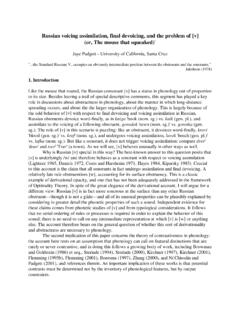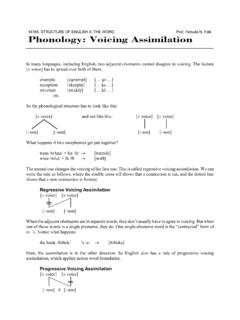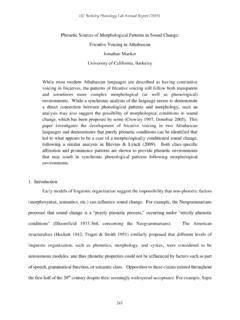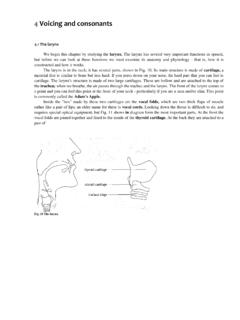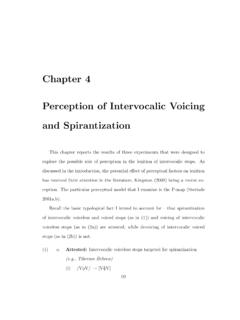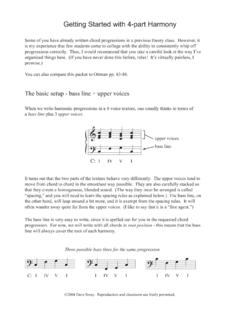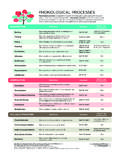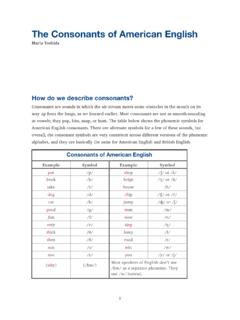Transcription of Basic Rootless Piano Voicings - Chris Fitzgerald
1 Basic Rootless Piano Voicingsby Chris Fitzgerald Ex. 1 The three most Basic scales: Major, Dominant, and Minor. Notice that theonly differences between these scales relate to alterations of the 3rd and 7th scale degrees, as all other degrees are common to all three scales. Learn to hear the sound of each scale degree as it relates to the root of each scale. Learn to play each scale fluently in all 12 2 3 4 5 6 7 8 Major R 2 3 4 5 6 b7 8 Dominant (Major w/ lowered 7th) Since the only differences in these three scales are variations on their3rd and 7th scale degrees, the 3rd and 7th of any chord built around thesebasic tonalities of Major, Dominant, and Minor will be referred to as "guide tones" ( - they enable you to determine the quality of thechord).
2 All other tones which may be added to a chord only serve to addcolor to the quality of chord established by the guide tones, and will bereferred to as "color tones".R 2 b3 4 5 6 b7 8 Minor (Dorian minor - Major scale w/ lowered 3rd & 7th) Ex. 2Ex. 3 Basic two-note "guide tone" Voicings , containing only the 3rd and 7th ofeach chord. For our purposes, all Voicings built up from the 3rd will be referredto as "Type I" Voicings , and those built up from the 7th will be called "Type II". Basic one-hand Voicings created by adding color tones to the guide tones in the previous example.
3 For Major and Minor chords, the color tones addedare the 5th and 9th; for Dominant chords the 6th is substituted for the 5th, whichsounds a bit ^Type:I37 II73 I37C7 II37 C-7I37 II73 Ex. 4 Voice Leading is the science of moving from one chord voicing to the nextwith as little motion as possible. Since we are only using two types of Voicings (Types I and II), we can reduce voice leading to a simple two-step process:a) Determine the intervallic distance between consecutive chord roots, then;b) Voice lead according to the guidelines the consecutive root movement is by: - Major or minor 2nd, retain the same voicing type.
4 - Major or minor 3rd, either voicing type will lead equally well. - Any type of 4th or 5th, switch from one voicing type to the other. C^Type:I3759 II7395 C-7I3759 II7395 C7I3769 II7369 C^Root Motion by 2ndType:I Bb^I orD^I C^II IIB^ orIIDb^ 2 C^Type:Root Motion by 3rdI A-7I or(A-7)II C^II IIEb-7 or(Eb-7)I D-7 Root Motion by 4th or 5thType:I G7II orIIA-7 D-7II G7 IorA-7I Ex. 5 Two different versions of the ii-V7-I progression, arguably the most common chord progression in jazz. Note that the root motion in both parts is by 4th or previous rules of voice leading by voicing type :I3579 G7II96 73C^I37 95D-7II73 59G7I37 96C^II7935 Ex.
5 6 One-hand voicing range: It is important to make sure that Voicings stay in an acceptable sonic range, otherwise they may sound too muddy (too low) or too thin (too high). The range listed below, while somewhat arbitrary, is suggested as a Basic Note Lowest Note 3 Ex. 7D-795 Two hand open position version of Basic ii-V7-I C^95 D-759 G796 C^59 37 Type:I 73II 37I 73II 37I 73II Ex. 8D-795R Five note ii-V7-I Voicings based on construction in 4ths: a more open C^957 D-75911 G796R C^695 37 Type:I 73II 36I 73II 37I 73II Ex. 9D The minor ii-V7-i progression. Notice that the root is substituted for the 9thin the ii chord, and the 5th and 9th of the V7 chord are :I G7+9II 37+5 +9C-7I735 9D 73II 5RG7+937I +9+5 C-773II 59 Ex.
6 10D R5 Two hand open-position version of the minor +9+5 +9 C-795 D 5R G7+9+9+5 C-759 37 Type:I 73II 37I 73II 37I 73II 4
